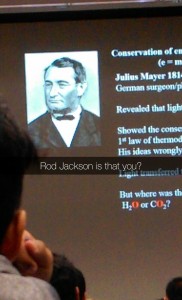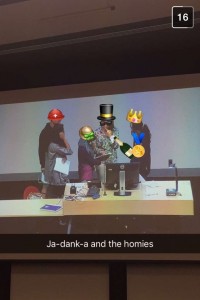Hey Team,
So this was supposed to be an audio blog but because of the technical difficulties involved last time I decided to move back to good old pen and paper or more accurately back to the trusty keyboard (I’m sure you can appreciate that Willy C.)
This blog is about my other two Semester 1 papers POPLHLTH 111 and CHEM 110. These are core papers meaning they are also part of the first year Health Science course and are considered important for entry to medicine.
POPLHLTH 111
This is the only non-science paper of semester one and for that reason I quite enjoyed this change to a different learning style. Instead of fortnightly labs there was 3 x 1hr lectures and a fortnightly 2 hour compulsory tutorial where we completed team based learning activities.
POPHLHLTH is short for Population health. This is similar to public health and quite obviously looks at health on a population scale. It is something I had never done in high school which was exciting but if I had to a liken it to a high school subject I would put it in the Social sciences. The course is split into 4 modules:
Module 1: You kick the semester off with Epidemiology – ‘how to measure the frequency of disease in a population’. Module 1 is taught by Rod Jackson who is somewhat of a celebrity in the premed world. Mostly known for his hatred of butter, looking like Robin Williams and a youtube clip from a few years back.

Mostly this module is based on similar concepts to what you do in high school statistics such as relative risk and confidence intervals. You become well acquainted with ‘The GATE Frame’ the proud brainchild of Rod Jackson as well as other models like ‘Incidence rain,’ the ‘prevalence pool’ and RAMBOMAN and finish up looking at study errors and different epidemiological study designs. I didn’t particularly like this module but you can get through just remember the GATE notes are your bible.


Module 2: This is all about the ‘Determinants’ of disease in populations which means the things which affect the health of populations. You look at social determinants like socio-economic position, income, deprivation and ethnicity and say hello to more models including the ‘Dahlgren and Whitehead’. We also had a guest lecture on Māori Heath which I really enjoyed. In addition you learn about barriers to accessing health care and how to code ethnicity. Most people found it hard to discern what was examinable in this section.
Module 3: This was my favourite module which looked at how to improve population health. You learn about different approaches to population health, health promotion, disease prevention and protection which are things like immunisation and population screening. There is a lecture dedicated to Obesity which was quite interesting and some more about Māori health promotion. Like previous modules there are plenty of models in this section for you to learn too.
Module 4: This module basically takes the concepts you’ve learnt throughout the course and applies them to situations. You learn about the Global Burden of disease project, how industry (e.g. Tobacco) has affected population health. There’s one lecture about the right to health which is more like a law lecture so that’s cool. You also cover disability, HIV, youth in NZ, road traffic injuries and climate change and as you’d expect more models.
POPLHLTH 111 has 2 midterm multi choice tests and the final exam worth 60% which is not multi choice. This year was the first time they did in a 4% in class group presentation where you apply what you’ve learnt in the lectures to an assigned disease (e.g we had Melanoma) then you present a group powerpoint about it in your final tutorial.
CHEM 110
This paper is not unlike high school chemistry but is primarily organic with a few other topics sprinkled in between. The labs for CHEM 110 were definitely my favourite labs this semester because you get to do ‘real’ experiments like making aspirin, finding the alcohol content in “wine” and actually doing things like reflux which you only hear about in high school. Also the lab room itself is pretty impressive compared to the biology building.
Block 1 is all about the foundations so covers the basics like drawing and naming organic molecules, isomerism and physical properties. This is pretty breezy if you did organic in highschool but it’s still important to nail the basics if you want to do well for the rest of the paper.
Block 2 is good ol Spectroscopy not a favourite of mine but nevertheless I made it through. This is also something you might’ve done in high school but you add some more detail looking at H NMR which was new for me and is the bulk of this section.
Block 3 is Kinetics which is measuring and interpreting the rate of reactions, a whole new area of Chemistry for me. Major topics included rate laws and catalysis. This is probably the most maths you do in Chem so initially I was not a fan, but once I had my head around it I found this section comparatively quite straightforward. The lecturer is either you love her or you hate her and luckily for me it was love despite the thick accent.


Block 4 – This is the first time you get into the nitty gritty of the functional groups section of organic chemistry. You look at the types reactions and reagents for alkenes, alkynes, aromatics and alkyl halides. Pretty much if you just learn the reaction schemes you’re given and understand the reaction mechanisms for substitution reactions you’re good to go. This section as well as Spec were taught by a lecturer with a very dry sense of humour so he always kept things entertaining.
Block 5 – This is all about Acids and Bases and covered what you do in high school including weak/strong acids and bases, Ka, calculations and titration curves. If anything this is easier than high school so most of this block is a nice chance to have a little sleep before the next full on BIOSCI 107 lecture. (Note: I am not recommending sleeping in lectures.)
Block 6 – This is the second half of functional groups and the meatiest section of Chem 110. You look at alcohols, aldehydes and ketones, carboxylic acids and their derivatives, amines and finish up with the chemistry of proteins and carbohydrates which ties in with biology. This section has a lot of complicated reaction schemes and it is pretty much impossible to memorise them all so the best thing is to get an understanding of the reaction mechanisms. As there’s a lot of new stuff from highschool this is probably the hardest section but the lecturer breaks it down amazingly well.
So that’s Chem 110. You have two midterm tests of 15% and a final exam worth 50%. Most found the tests very time pressured but the exam is the opposite. My advice for succeeding in this paper is practise. We were given great practise test materials very similar to the real deal so if you could nail those you had a good chance. I also particularly liked the assessment of Chem, because it was most like high school rather than Multichoice like the others.
Also as whole I was really impressed with how well this paper was organised, the notes we got were amazing, the lecturers worked well as a team and we got our marks back amazingly fast after the test considering there was something like 1400 people who sat this paper, so big ups to the Chem 110 team.
So thats my two cents on my Sem 1 papers and now this has become a ridiculously long entry so I will leave it there. Hit the comments if you have any questions.
Till next time, stay away from butter
-A
Hi, thanks for your comment. What is course book name for CHEM 110? Can you please also share topics of the paper?
Absolutely love Anns, great analysis of sem 1 papers. Would have been so useful coming into first year. Love from your second favourite health scier